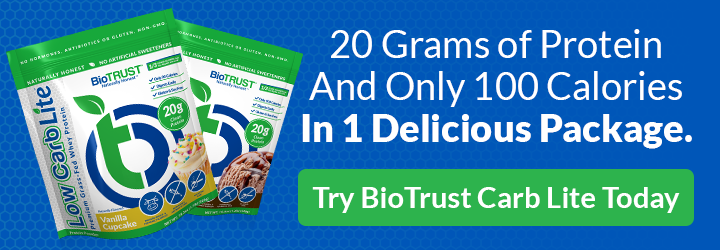How Much Muscle Weight Can You Gain Per Month (Healthfully)?

So, you want to build muscle quickly… but how much muscle weight can you gain per month in a healthy way? Well, as always, it depends. A number of factors dictate how fast you can put on muscle and how much you can gain in general. These are based on genetics, age, experience, nutrition, hydration, workouts, recovery, and supplementation.
Newbie Gains
Have you ever heard of “Beginner’s Luck”? Well, beginners in muscle building get lucky, too. Why do newcomers to weightlifting have such an advantage when it comes to putting on muscle? It’s because they are just beginning to tap into their genetic muscular potential.
Newbie lifters typically gain more easily and faster with less targeted training and nutrition. With this sub-group, there is less of a concern about getting everything “right” and more of a concern with establishing good nutritional habits and setting up consistent resistance training workouts.

Experienced Lifters
Experienced trainees who are already on point with the above concerns need to be more aware of specialized variables that will help them boost their muscle-gaining abilities as they get closer to their genetic potential.
Once weightlifting is old hat for you, your gains will slow dramatically. Yes, you can absolutely still build significant muscle with strategic training and intentional nutrition protocols, but your gains won’t mirror those of your newbie gym mates. Think of running up stadium stairs as fast as you can. At first, you’ll be pretty speedy, but the longer you keep going, the slower you’re going to get, even though you will eventually make it up the stairs. While muscular gains don’t slow that dramatically, you get the picture.

How Hard Do You Have to Push Yourself When Weight Training?
You have to go pretty hard if you expect to change your physique. Because your body is so amazing, it can adapt to the stressors you put on it. Your mission, should you choose to accept it, is to keep it from adapting. How is this done?
Use what’s called “progressive overload training,” which constantly challenges your body with added weight, various repetition ranges, different rest periods, new exercises, and more. The point is to always surprise your body, so it never has the chance to adapt to what you’re doing. To gain muscle, your repetition range should be between 8 and 12 reps, and every weightlifting workout should challenge you a little bit more than the last one.
What about cardio? While you still want to keep body fat at bay, doing long bouts of cardio will be counterproductive to building muscle. Instead, researchers say to focus on more short-term, higher-intensity aerobic activities, like sprints, for the optimal combo of fat burning and muscle preservation.

How Much Do Nutrition and Supplementation Matter?
The answer is that it’s almost as important as the lifting itself! Yes, it’s that big a deal. Why? It’s because when you lift weights, you’re tearing down muscle fibers. It’s the rebuilding of these fibers that constitutes muscle growth. But, to grow, these tissues need sustenance. What should you focus on?
Protein—as one of the main building blocks of muscle, protein is essential to building muscle. According to the American College of Sports Medicine, when resistance training is part of your routine, you should get between 0.5 and 0.8 grams of protein per pound of body weight per day.
Pre- and Post-Workout Nutrition—what you eat and when also plays a role in how much muscle you can build. Eat your healthy carbs before and after your workout to support muscle growth, and spread your protein out throughout the day.
Creatine—this heavily researched supplement has been tried and true over decades of use. When used with proper training and nutrition, creatine can help increase muscular strength and lean body mass.
Ageless Muscle—this supplement may help you both preserve the muscle you already have and support new muscle growth. Containing the super supplement creatine, Ageless Muscle also boasts HMB to assist with building muscle, and betaine and vitamin D to help you build and preserve that lean muscle mass.
To gain muscle, you need to eat in a slight caloric surplus. No, that doesn’t mean noshing on all the fun foods in sight. It requires a conscious and consistent choice of quality proteins, spaced throughout the day, healthy fats, and whole food, natural carbohydrates. The trick is finding the right balance of calories in versus calories out that allows you to put on muscle mass without putting on a lot of extra body fat.
It’s important to remember that muscle tissue is very dense and, therefore, heavy. It may be tough to wrap your brain around the concept that the scale is going to reflect numbers you may not like (your scale weight going up), even though you look better than ever and your body fat is melting away. But, building metabolically active muscle by eating plenty of the right calories will help shape your body and keep you strong and lean.
So, How Much Muscle Can You Gain in a Month in a Healthy Way?
As discussed, this will depend on your nutrition, training, supplementation, rest, and untapped muscular potential. Studies show that while experienced weightlifters may only gain a few pounds of muscle mass a year (between .25 and .75 pounds per month), newbie weightlifters can gain anywhere from 0.5 to 2.0 pounds of muscle in a month.
Remember, while you can gain a decent amount of muscle in a month, your gains, over time, will slow. The closer you get to the optimal amount of muscle mass for your genetics, the more hard-earned your gains will become. But, be patient. Building and maintaining muscle should be a lifelong goal for you as you continue to live a healthy lifestyle.





